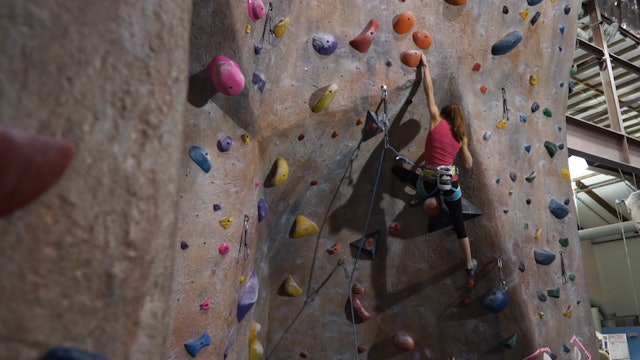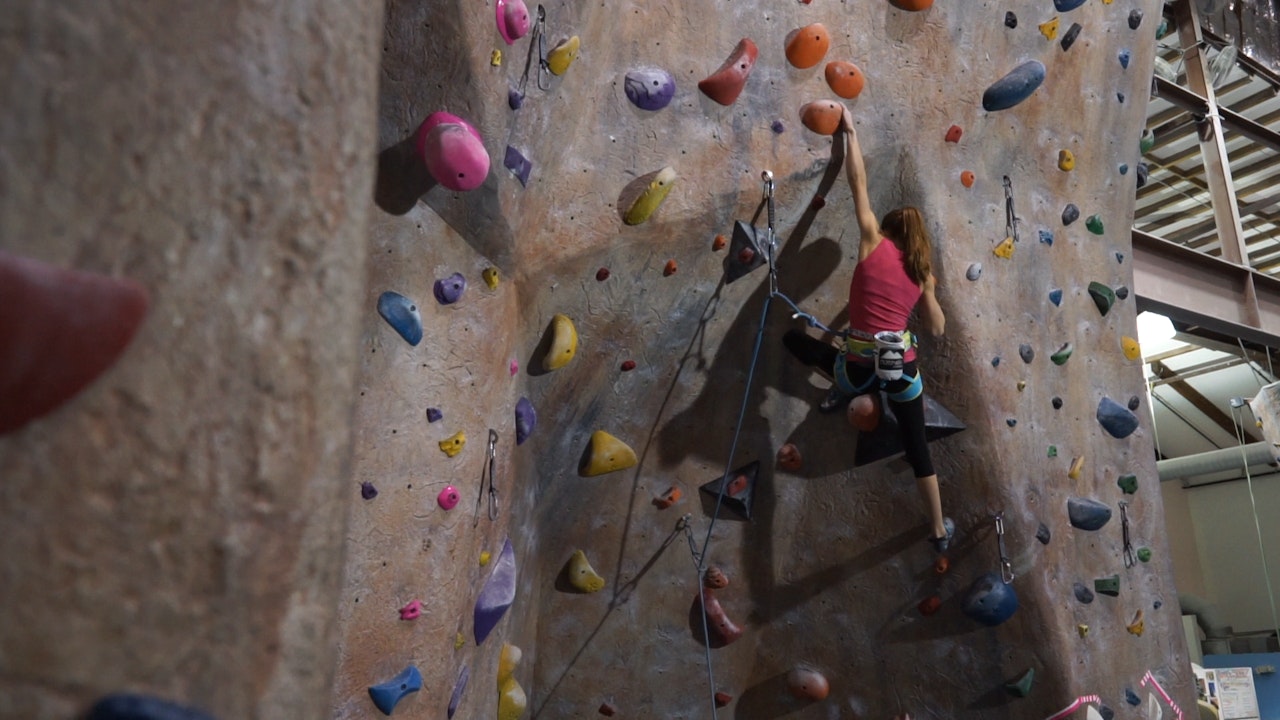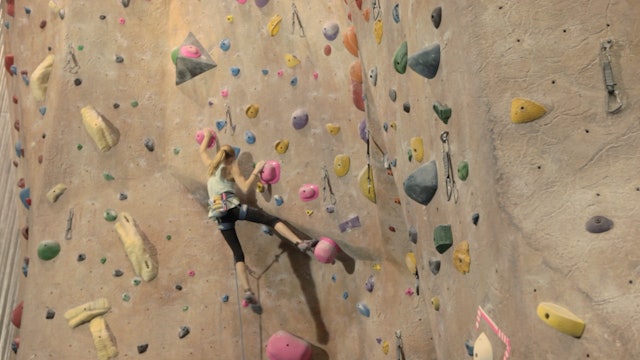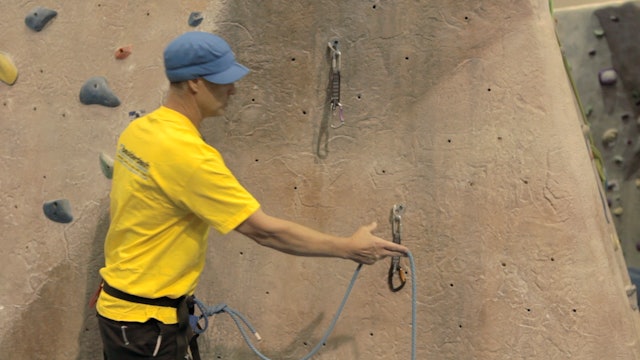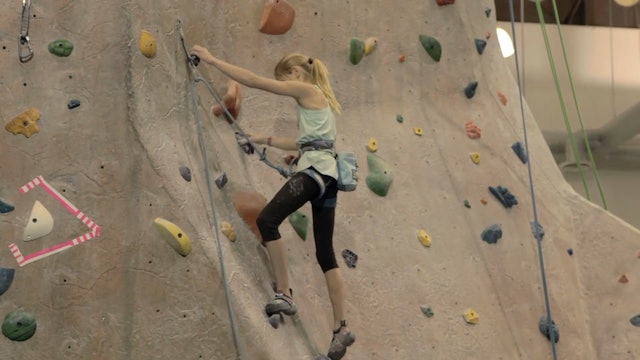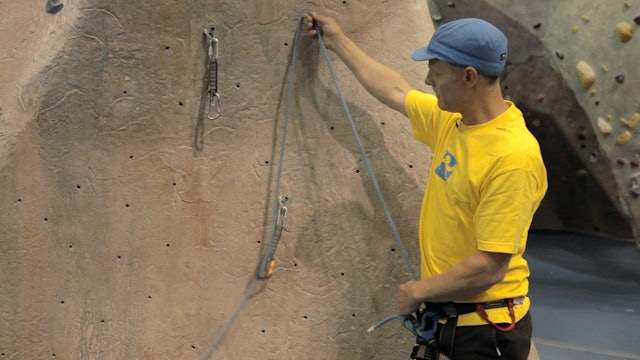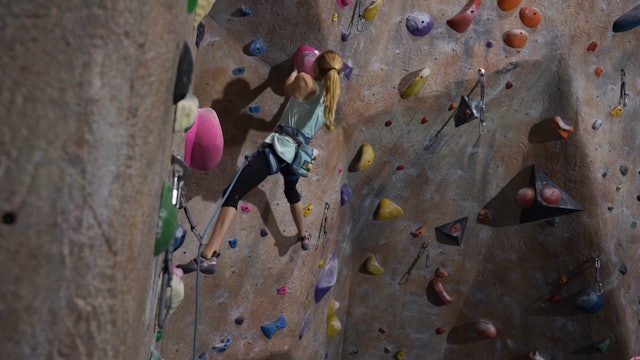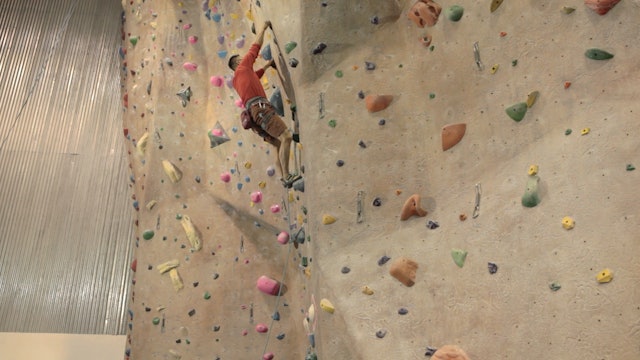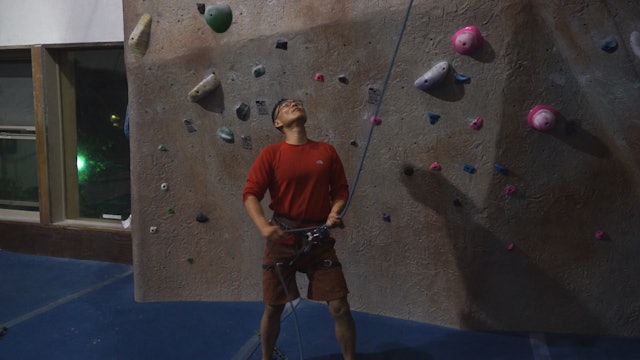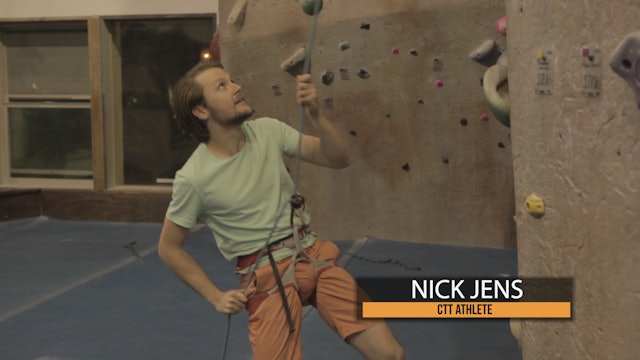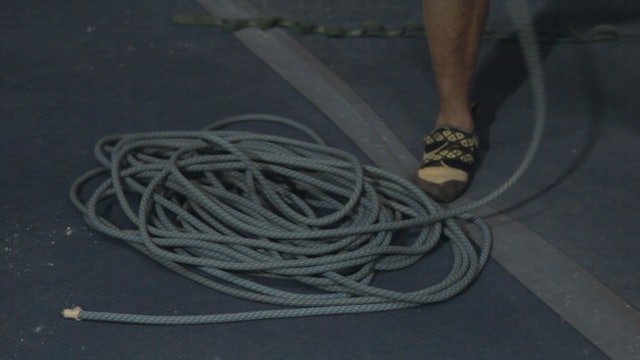Gym Lead Climbing
The Gym Lead Climbing video series teaches how to advance into the next stage of roped climbing, beyond top roping. Lead climbing involves clipping into quickdraws and anchors, as well as the excitement of climbing above your protection pieces. Here you will learn techniques for proper lead climbing, lead belaying, and minimizing risk.
Lead climbing is considered intermediate to advanced-level free climbing. Not free soloing, but free climbing. This means you are responsible for successfully ascending the climbing route via your own strength and skill, with a dynamic lead rope. The rope is there to catch you, should you fall. However lead climbing obviously poses greater risks than top-roping.
Newer lead climbers should watch all CTT Gym Lead Climbing videos before attempting to lead climb or lead belay. You must also be competent with all skills in our Gym Top Rope video series.
Let's get started! Our Gym Lead Climbing video series is below. Be careful, and have fun!
Know & Go with ClimbingTechTips.com
Please remember, climbing is inherently dangerous. Climb at your own risk.
-
Gym Lead Climbing: 1. Top Roping vs. Lead Climbing
Here we highlight the idea of falling and/or fall potential, which is a key difference between top rope climbing and lead climbing.
Top Rope Climbing - The climber's fall is usually short, if at all.
Lead Climbing - There is potential for a greater fall, depending on how high above the cli...
-
Gym Lead Climbing: 2. How to Clip
Proper technique for how to clip into a quickdraw while gym lead climbing:
1. Know which way the carabiner gate is facing (left or right) on the quickdraw you’re approaching. In this instance assume the gate faces right.
2. Reach down with your right hand to the knot (where you’re tied in) ...
-
Gym Lead Climbing: 3. When to Clip
This video shows considerations for when to clip the lead rope into fixed protection, such as a pre-hung quickdraw.
Below are the three main considerations of determining when to clip, while on lead:
1. Where you are clipping in relation to your body.
2. Clipping above your head, versus ...
-
Gym Lead Climbing: 4. Avoid Back-Clipping
In this gym lead climbing video, we review the importance of avoiding “back-clipping”.
As part of proper rope clipping technique, the lead climber’s end of the rope is always clipped away from the wall, while the belayer’s end of the rope is on the inside of the wall. This offers the leader a ...
-
Gym Lead Climbing: 5. Avoid Skipping Clips
It is important to avoid “skipping clips”. Some leaders climbers might consider skipping clips because they are brash or overconfident. Other lead climbers might mistakenly skip a clip because they have tunnel vision, or were not paying attention to the route direction. Either way, skipping clips...
-
Gym Lead Climbing: 6. Avoid Z-Clipping
Avoid “Z-Clipping”!
“Z-clipping” can occur when clips are positioned close to one another.
The mistake happens when a climber has clipped into a quickdraw, and while reaching down to grab the rope for their next clip, they mistakenly grab the belay side of the rope already clipped and clip ...
-
Gym Lead Climbing: 7. Climbing Overhangs
Tips to consider when climbing overhangs:
1. Identify the sequences - Climbs are broken out into parts, each with their own unique sequences. Try to identify the crux sections before you start climbing. This helps you to be prepared for each one.
2. Find rest spots - This allows you to slo...
-
Gym Lead Climbing: 8. Danger Zones
“Danger Zones” a lead climber should consider when climbing:
1. The first three quickdraw clips are often the most dangerous section of the climb because of ground fall potential.
2. Identify crux moves as early as possible, so you are clipping from a better position or safer stance.
3. ...
-
Gym Lead Climbing: 9. Lead Falling
Falling while on lead happens, and it’s okay! It means you are pushing yourself, and learning.
Here are a few considerations when falling while on lead:
1. Be aware of your last draw. This determines direction of swing, and how far your fall will take you.
2. Know where the rope is, in c...
-
Gym Lead Climbing: 10. Lead Belaying
Lead belaying is an advanced skill, requiring the belayer on the ground to be very in tune with the climber as they lead up the wall.
Proper lead belaying considerations:
1. The lead belayer is typically responsible for rope management. This means flaking the rope into a proper stack, in th...
-
Gym Lead Climbing: 11. Lead Belay Stances
In our other Lead Belaying videos, we mentioned that an ideal belay stance helps position the belayer as close to underneath the first draw as possible (while trying to minimize potential of the lead climber crashing into the belayer, if the leader were to fall).
There are two main safety reas...
-
Gym Lead Climbing: 12. Soft Catches
The “soft catch”, also know as a dynamic belay, is considered an advanced technique. In theory, this reduces the impact of a climber when they fall a distance.
The first way to give a soft catch is by carefully letting out a very short amount of rope as the belayer engages the belay device, t...
-
Gym Lead Climbing: 13. Stacking the Rope
As the lead climber prepares for the climb, the lead belayer should prepare by “flaking” the rope. This is also known as “stacking the rope”.
Flaking (i.e. to flake) the rope involves starting with one end of the rope and forming a coil on the ground, threading the rope through your hands to f...
